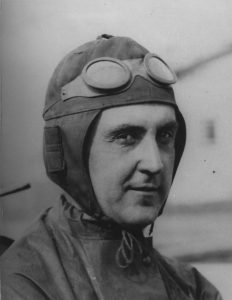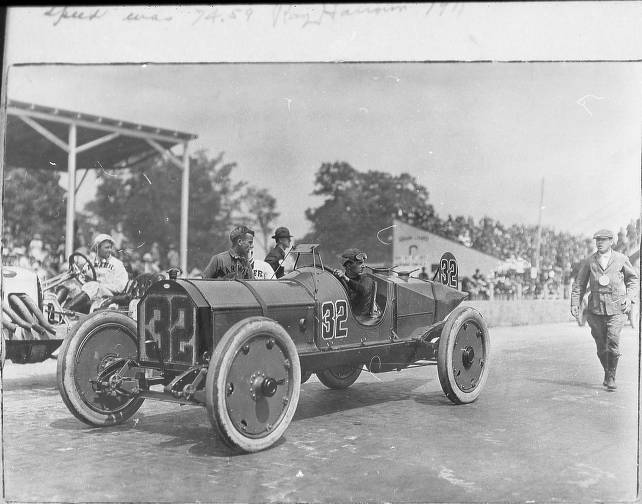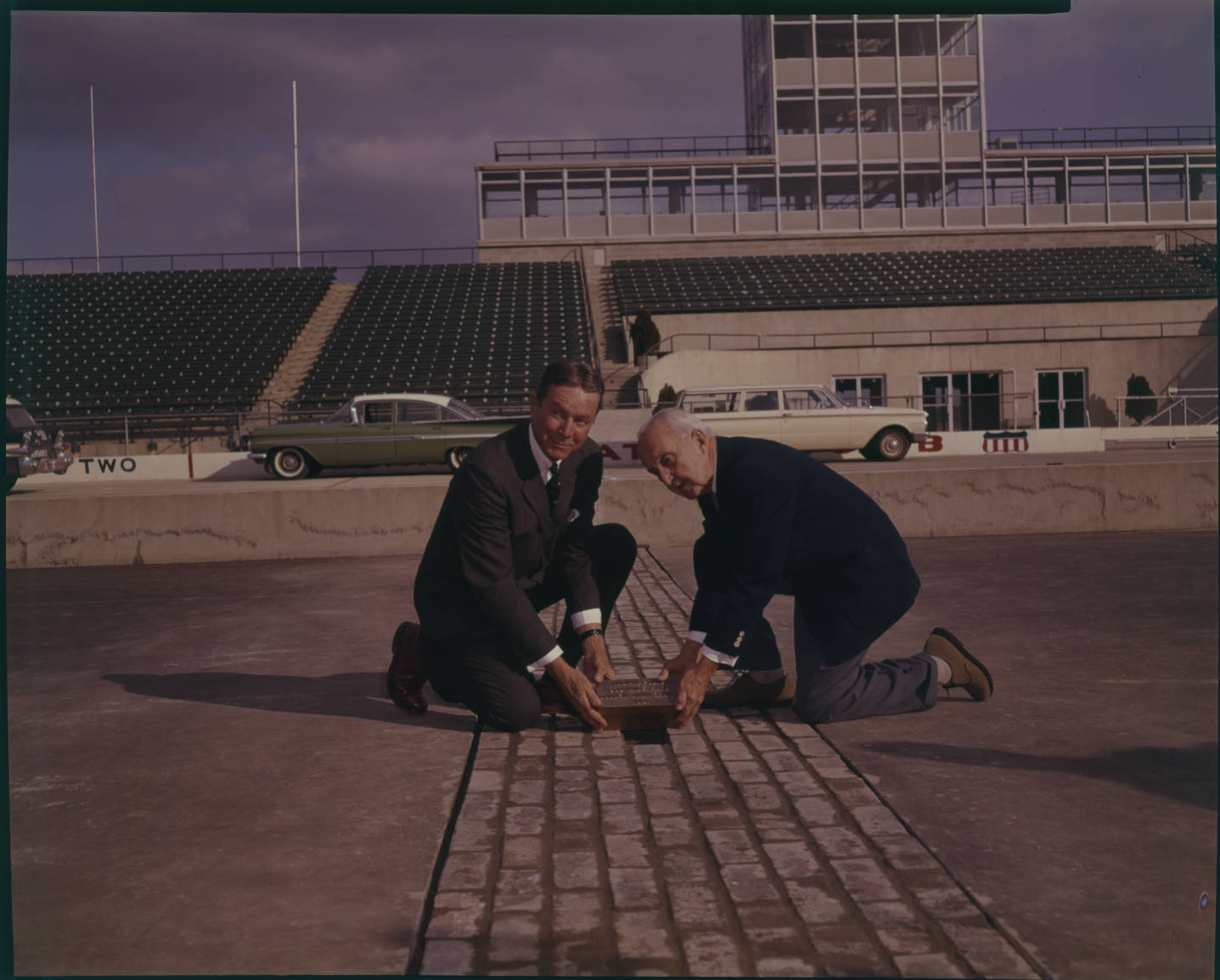
Photo info …
Credit: Indiana University IndianapolisView Source
(Jan. 12, 1879-Jan. 19, 1968). Born in Spartansburg, Pennsylvania, to Russell LaFayette Harroun and Lucy A. Halliday, Ray Harroun apprenticed as a dental technician and served on a coal carrier for the U.S. Navy during the Spanish-American War. He then took a job as a chauffeur and found that he had a knack for tinkering with automobiles.
At the turn of the 20th century, Harroun joined a four-man team that set the original land-speed record for driving from Chicago to New York, in 1903, and then again in 1905. He became a member of the Buick racing team in Lowell, Massachusetts, in 1906. Though hired as a racing mechanic, Harroun soon served as a driver. Records for this era are incomplete, but he won no fewer than seven early shorter races at the before the was inaugurated.
In 1910, Harroun entered 60 auto races and won 45. He earned that year’s American Automobile Association national driving championship retroactively when rules for the racing series finally were put in place in 1927. Harroun intended to retire from racing after the 1910 season, taking a job as chief engineer with the in Indianapolis. Marmon, however, persuaded him to race one more time at the Indianapolis Motor Speedway, where the first Indianapolis 500 was planned for 1911.

For this event, Marmon allowed Harroun to design his own car. He eliminated the traditional two-man design to create the first open-wheel, single-seater race car. Up to this point, race cars were two-seaters, designed to accommodate a driver and a racing mechanic who watched the instruments and kept an eye on traffic coming from behind. Harroun’s novel design cut the weight of his entry, resulting in a far more aerodynamic car. It was sculpted into a long, narrow bullet-like shape with a flared cockpit and pointed tail that acted like a stabilizer. Painted a bright yellow and black, a journalist dubbed the car the “Wasp.”
When other drivers protested that Harroun’s entry was a hazard because it had no seat for a driving mechanic, he bolted a mirror on brackets over the steering wheel to see the rear oncoming traffic. This contraption was the first rearview mirror. On May 30, 1911, Harroun won the inaugural Indianapolis 500 in 6 hours, 42 minutes, and 8 seconds for an average speed of 74.6 miles per hour. He earned $14,250 in his number 32 Wasp. His progressive car, however, was banned from further competition.
In 1913, Harroun moved to the racing team of the Maxwell Company, the forerunner of the Chrysler Corporation, in Michigan. He formed Harroun Motors Corporation in Wayne, Michigan, in 1916, where he planned to make affordable passenger cars. Harroun, however, soon entered a contract with the U.S. government to make equipment and munitions for the World War I effort. Following the conflict, the company did not recover from this interruption in automobile production, and it folded in 1922.

Harroun innovated in the engineering of carburetors, patented a shock-absorbing steering wheel, and designed a monoplane and a low-slung cart to load bombs that were used in World War II. While living in Saginaw, Michigan, in the mid-1930s and early 1940s, he and another former Marmon engineer designed a vehicle that foreshadowed the modern motorhome. Harroun left Saginaw in the mid-1940s to work as an engineer for Chrysler and then moved to Anderson, Indiana, in the 1950s.
Harroun returned to the Indianapolis Motor Speedway to drive demonstration laps in his 1911 Marmon Wasp for the 25th (1937) and 50th (1961) Indianapolis 500 races. The car also made an outing for the 100th running of the race in 2011, with 1963 Indy 500 champion Parnelli Jones at the wheel. The fully restored automobile can be seen in the .

Help improve this entry
Contribute information, offer corrections, suggest images.
You can also recommend new entries related to this topic.

